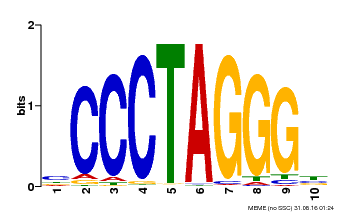| Signature Domain? help Back to Top |
 |
| No. |
Domain |
Score |
E-value |
Start |
End |
HMM Start |
HMM End |
| 1 | DUF702 | 230.4 | 3.1e-71 | 138 | 286 | 2 | 153 |
DUF702 2 rsgtasCqdCGnqakkdCaheRCRtCCksrgfdCathvkstWvpaakrrerqqqlaaasskaaasaaeaaskrkrelkskkqsalsstklssaeskke 99
+sg++sCqdCGnqakkdC+h+RCRtCCksrgf+C+thv+stWvpaakrrerqqqla+ + +++ + e+ +kr+re+ +++s+l +t+++s++
AT3G51060.1 138 GSGGVSCQDCGNQAKKDCSHMRCRTCCKSRGFECSTHVRSTWVPAAKRRERQQQLATVQPQTQLPRGESVPKRHRENLPATSSSLVCTRIPSHS---G 232
57899*****************************************************99999999************************9995...7 PP
DUF702 100 letsslPeevsseavfrcvrvssvddgeeelaYqtavsigGhvfkGiLydqGle 153
le+ ++P+evss+avfrcvrvssv+dgeee+aYqtavsigGh+fkGiLyd G+
AT3G51060.1 233 LEVGNFPAEVSSSAVFRCVRVSSVEDGEEEFAYQTAVSIGGHIFKGILYDLGPG 286
8999************************************************85 PP
|
| Functional Description ? help
Back to Top |
| Source |
Description |
| TAIR | A member of SHI gene family. Arabidopsis thaliana has ten members that encode proteins with a RING finger-like zinc finger motif. Despite being highly divergent in sequence, many of the SHI-related genes are partially redundant in function and synergistically promote gynoecium, stamen and leaf development in Arabidopsis. STY1/STY2 double mutants showed defective style, stigma as well as serrated leaves. Binds to the promoter of YUC4 and YUC8 (binding site ACTCTAC) |
| UniProt | Transcription activator that binds DNA on 5'-ACTCTAC-3' and promotes auxin homeostasis-regulating gene expression (e.g. YUC genes), as well as genes affecting stamen development, cell expansion and timing of flowering. Synergistically with other SHI-related proteins, regulates gynoecium, stamen and leaf development in a dose-dependent manner, controlling apical-basal patterning. Promotes style and stigma formation, and influences vascular development during gynoecium development. May also have a role in the formation and/or maintenance of the shoot apical meristem (SAM). {ECO:0000269|PubMed:12361963, ECO:0000269|PubMed:16740145, ECO:0000269|PubMed:16740146, ECO:0000269|PubMed:18811619, ECO:0000269|PubMed:20154152, ECO:0000269|PubMed:22318676}. |
| Publications
? help Back to Top |
- Fridborg I,Kuusk S,Robertson M,Sundberg E
The Arabidopsis protein SHI represses gibberellin responses in Arabidopsis and barley.
Plant Physiol., 2001. 127(3): p. 937-48
[PMID:11706176] - Kuusk S,Sohlberg JJ,Long JA,Fridborg I,Sundberg E
STY1 and STY2 promote the formation of apical tissues during Arabidopsis gynoecium development.
Development, 2002. 129(20): p. 4707-17
[PMID:12361963] - Castelli V, et al.
Whole genome sequence comparisons and "full-length" cDNA sequences: a combined approach to evaluate and improve Arabidopsis genome annotation.
Genome Res., 2004. 14(3): p. 406-13
[PMID:14993207] - Sohlberg JJ, et al.
STY1 regulates auxin homeostasis and affects apical-basal patterning of the Arabidopsis gynoecium.
Plant J., 2006. 47(1): p. 112-23
[PMID:16740145] - Kuusk S,Sohlberg JJ,Magnus Eklund D,Sundberg E
Functionally redundant SHI family genes regulate Arabidopsis gynoecium development in a dose-dependent manner.
Plant J., 2006. 47(1): p. 99-111
[PMID:16740146] - Ståldal V,Sohlberg JJ,Eklund DM,Ljung K,Sundberg E
Auxin can act independently of CRC, LUG, SEU, SPT and STY1 in style development but not apical-basal patterning of the Arabidopsis gynoecium.
New Phytol., 2008. 180(4): p. 798-808
[PMID:18811619] - Alvarez JP,Goldshmidt A,Efroni I,Bowman JL,Eshed Y
The NGATHA distal organ development genes are essential for style specification in Arabidopsis.
Plant Cell, 2009. 21(5): p. 1373-93
[PMID:19435933] - Trigueros M, et al.
The NGATHA genes direct style development in the Arabidopsis gynoecium.
Plant Cell, 2009. 21(5): p. 1394-409
[PMID:19435937] - Eklund DM, et al.
The Arabidopsis thaliana STYLISH1 protein acts as a transcriptional activator regulating auxin biosynthesis.
Plant Cell, 2010. 22(2): p. 349-63
[PMID:20154152] - Zawaski C, et al.
SHORT INTERNODES-like genes regulate shoot growth and xylem proliferation in Populus.
New Phytol., 2011. 191(3): p. 678-91
[PMID:21564099] - Eklund DM, et al.
Expression of Arabidopsis SHORT INTERNODES/STYLISH family genes in auxin biosynthesis zones of aerial organs is dependent on a GCC box-like regulatory element.
Plant Physiol., 2011. 157(4): p. 2069-80
[PMID:21976484] - St
The Arabidopsis thaliana transcriptional activator STYLISH1 regulates genes affecting stamen development, cell expansion and timing of flowering.
Plant Mol. Biol., 2012. 78(6): p. 545-59
[PMID:22318676] - Baylis T,Cierlik I,Sundberg E,Mattsson J
SHORT INTERNODES/STYLISH genes, regulators of auxin biosynthesis, are involved in leaf vein development in Arabidopsis thaliana.
New Phytol., 2013. 197(3): p. 737-50
[PMID:23293954] - Jin J, et al.
An Arabidopsis Transcriptional Regulatory Map Reveals Distinct Functional and Evolutionary Features of Novel Transcription Factors.
Mol. Biol. Evol., 2015. 32(7): p. 1767-73
[PMID:25750178] - Estornell LH,Landberg K,Cierlik I,Sundberg E
SHI/STY Genes Affect Pre- and Post-meiotic Anther Processes in Auxin Sensing Domains in Arabidopsis.
Front Plant Sci, 2018. 9: p. 150
[PMID:29491878]
|





